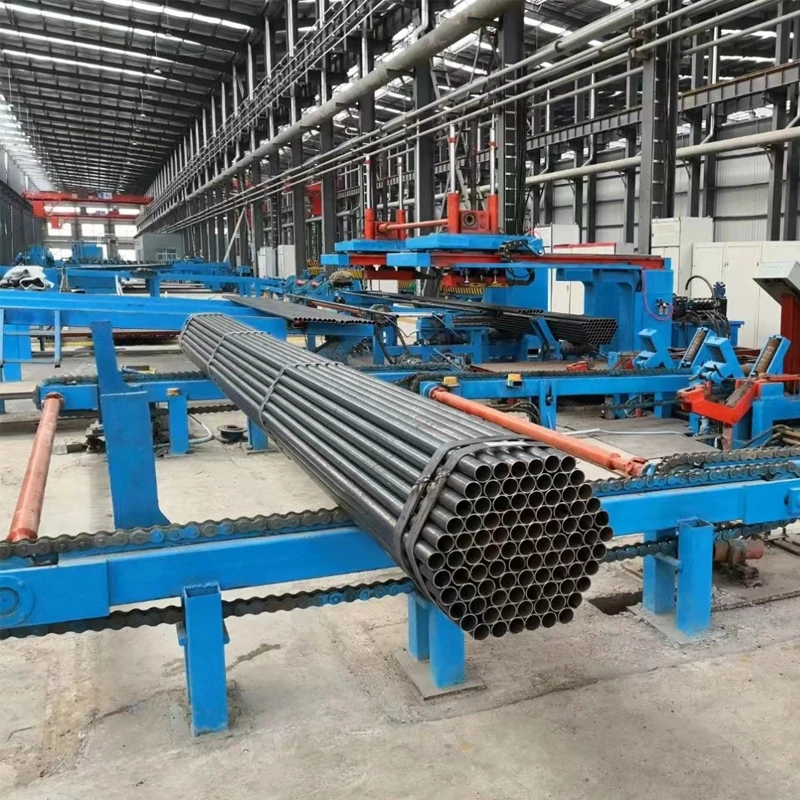automatic gauge control cold rolling mill
Automatic Gauge Control in Cold Rolling Mills
Cold rolling mills are essential in the manufacturing of steel and various metal products. They are used to reduce the thickness of metal sheets and strips, ensuring that they meet specific dimensional requirements for subsequent processing. One of the most important advancements in cold rolling technology is Automatic Gauge Control (AGC), which plays a crucial role in improving product quality, enhancing operational efficiency, and reducing waste.
Understanding Cold Rolling and Its Challenges
In the cold rolling process, metal is passed through a pair of rollers at room temperature, which reduces its thickness and increases its strength. However, achieving uniform thickness across the entire width of the material is a significant challenge. Variations in thickness can lead to product defects, impacting quality and performance in end applications. Without precise control, manufacturers may face increased scrap rates and higher production costs, not to mention potential disruptions in supply chains.
The Role of Automatic Gauge Control
AGC is a sophisticated feedback control system designed to maintain the desired thickness of the rolled product in real-time. It utilizes sensors to measure the gauge (thickness) of the material as it exits the mill, comparing it against predetermined specifications. If the measured gauge deviates from the target, the AGC system automatically adjusts the position of the rollers to bring the thickness back within acceptable bounds.
Components of AGC Systems
The core components of an AGC system include
1. Thickness Sensors These are integral to the AGC system, providing real-time data on the gauge of the material. Laser and x-ray gauges are common among cold rolling mills. They offer high precision and can operate at high speeds, essential for maintaining quality control.
2. Control Algorithms The software that interprets the sensor data and makes adjustments to the rolling process is crucial. Advanced algorithms, often based on model predictive control (MPC), enable the AGC system to anticipate gauge variations and make proactive adjustments to the roller settings.
3. Actuators These devices physically adjust the roller positions based on commands from the control system. The speed and accuracy of the actuators can significantly impact the responsiveness of the AGC system.
automatic gauge control cold rolling mill

Benefits of Automatic Gauge Control
The implementation of AGC systems brings numerous benefits to cold rolling mills
- Improved Product Quality By maintaining consistent thickness, AGC systems significantly reduce the incidence of defects, which in turn improves the overall quality of the finished products.
- Lower Scrap Rates Since AGC systems can make real-time adjustments, they help reduce the amount of scrap generated during the production process. This not only saves materials but also lowers costs associated with waste disposal.
- Enhanced Productivity Automated control systems reduce the need for manual interventions, allowing for higher throughput and more efficient use of resources. This is particularly important in high-volume production settings.
- Operational Flexibility AGC allows for rapid adjustments to changing conditions or product specifications, enabling mills to respond quickly to customer demands without significant downtime.
Future Trends in AGC for Cold Rolling Mills
As technology continues to advance, the capabilities of AGC systems are expected to evolve. Integrating artificial intelligence and machine learning into AGC could lead to even more sophisticated control mechanisms that can self-learn from historical data, optimizing the process without human intervention.
Moreover, with the increasing emphasis on sustainability, future AGC systems may also incorporate features that monitor energy consumption and material usage, further enhancing the green credentials of cold rolling mills.
Conclusion
Automatic Gauge Control is a game-changing technology in the cold rolling industry, enhancing product quality, reducing waste, and improving operational efficiency. As manufacturers continue to seek ways to optimize their processes and meet ever-growing market demands, AGC will undoubtedly remain at the forefront of innovation, driving the industry toward a more automated and sustainable future.
-
High Frequency Straight Seam Welded Pipe Production Line-BzZhou Xinghua Machinery Equipment Manufacturing Co., LTD.|Precision Welding, High EfficiencyNewsJul.30,2025
-
High Frequency Straight Seam Welded Pipe Production Line|BzZhou Xinghua|Precision Welding&EfficiencyNewsJul.30,2025
-
High Frequency Straight Seam Welded Pipe Production Line - BzZhou Xinghua|Precision Engineering&EfficiencyNewsJul.30,2025
-
High-Frequency Straight Seam Welded Pipe Production Line-BzZhou Xinghua Machinery Equipment Manufacturing Co., LTD.NewsJul.30,2025
-
High-Frequency Straight Seam Welded Pipe Production Line-BzZhou Xinghua Machinery Equipment Manufacturing Co., LTD.|Precision Manufacturing, High EfficiencyNewsJul.30,2025
-
High Frequency Straight Seam Welded Pipe Production Line-BzZhou Xinghua Machinery Equipment Manufacturing Co., LTD.|Precision Steel Pipe Manufacturing&Industrial EfficiencyNewsJul.29,2025


